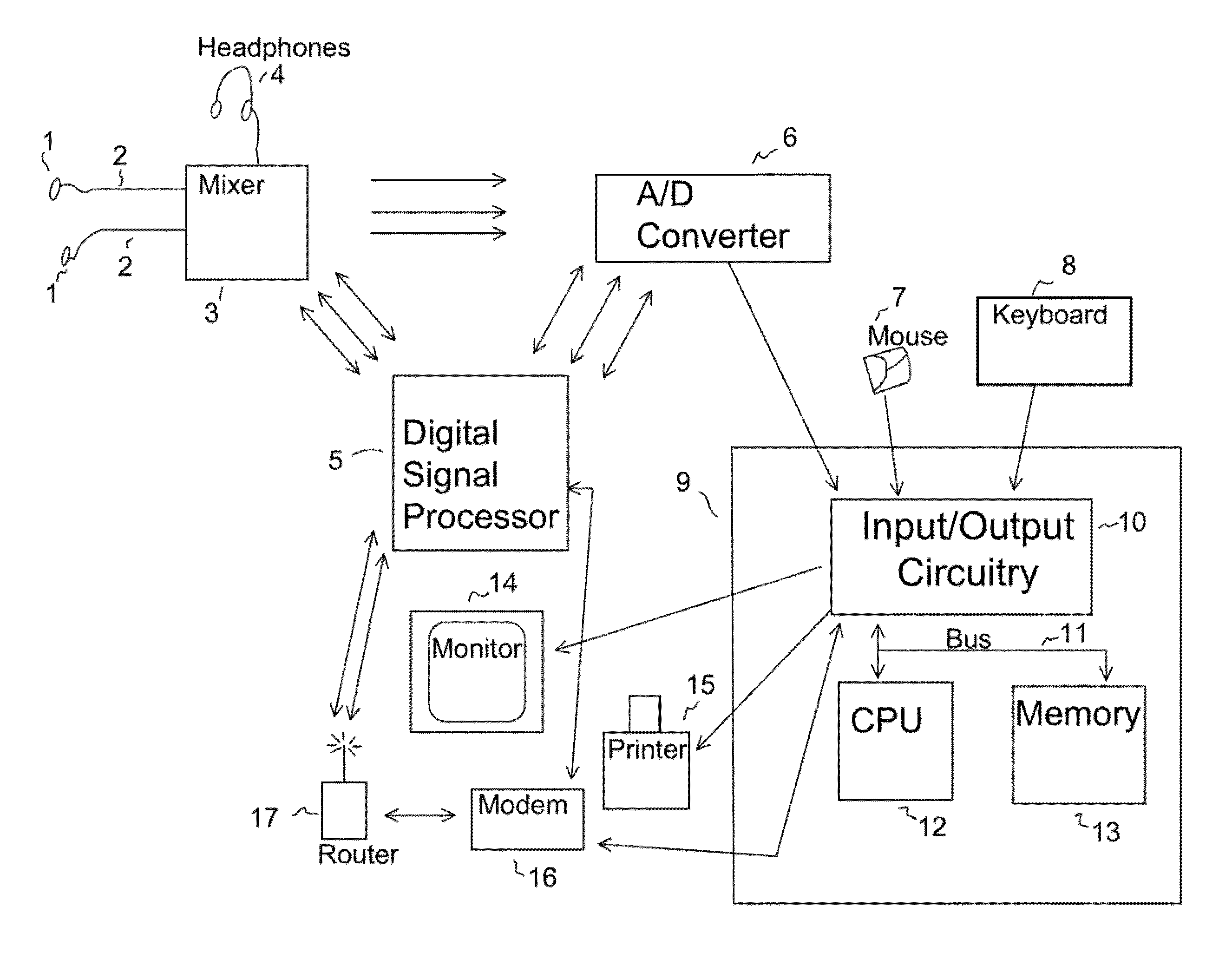Apparatus for acquiring and processing of physiological auditory signals
a technology of auditory signals and apparatus, applied in the field of acquisition and analysis of physiological auditory signals, can solve the problems of cumbersome devices and complicated operations of health care professionals in a professional setting, and achieve the effects of improving efficiency in the healthcare system and clinical outcomes for patients, and reducing the number of devices
- Summary
- Abstract
- Description
- Claims
- Application Information
AI Technical Summary
Benefits of technology
Problems solved by technology
Method used
Image
Examples
Embodiment Construction
[0035]FIG. 1 provides an overview of the sound recording and analysis system of the present invention. This system includes a transducer 1, such as an analogue condenser microphone, which can be placed at various sites around the patient to listen to sounds emitted by different organs. It should be understood that the system could be expanded to include additional transducers 1 if desired so that data from multiple sites can be collected concurrently. To isolate the sensors from external sounds (and thereby improve signal to noise), they may be embedded in the tubing / chest pieces of conventional stethoscopes. The transducer(s) 1 may be held against the surface of the patient with mechanical pressure applied by the operator, adhesive tape or suitable strapping to prevent movement during the data acquisition process.
[0036]Leads 2 extending from the sensors are balanced cables with XLR inputs 97 that connect to a signal conditioning station. A suitable signal conditioning circuit for u...
PUM
 Login to View More
Login to View More Abstract
Description
Claims
Application Information
 Login to View More
Login to View More - R&D
- Intellectual Property
- Life Sciences
- Materials
- Tech Scout
- Unparalleled Data Quality
- Higher Quality Content
- 60% Fewer Hallucinations
Browse by: Latest US Patents, China's latest patents, Technical Efficacy Thesaurus, Application Domain, Technology Topic, Popular Technical Reports.
© 2025 PatSnap. All rights reserved.Legal|Privacy policy|Modern Slavery Act Transparency Statement|Sitemap|About US| Contact US: help@patsnap.com



